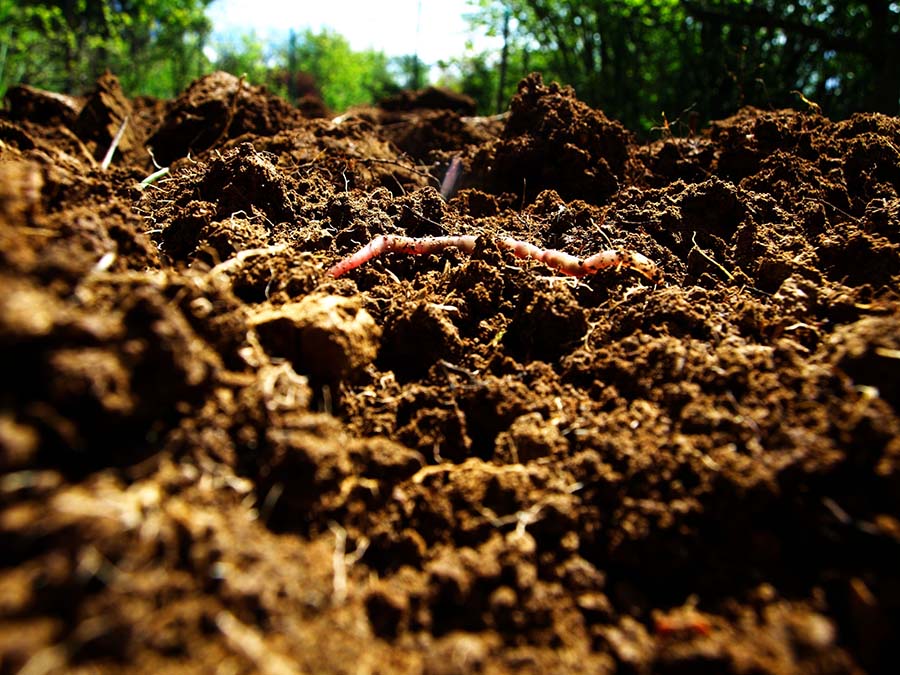The Importance of a Healthy Soil Ecosystem for Crop Productivity
Experienced farmers know that soil is a dynamic, living ecosystem and needs to be in top condition to support healthy crop production. A thriving soil ecosystem provides the optimal physical, chemical, and biological environment for crops to flourish and reach their full yield and quality potential.
From a physical standpoint, healthy soil has good structure – proper aggregation that allows for adequate water infiltration and retention, effective aeration for root respiration, and easy penetration for developing root systems. Chemically, it supplies essential plant nutrients in available forms, maintains a balanced pH, and buffers against harmful substances. Perhaps most critically, healthy soil is biologically vibrant. It supports an entire community of microorganisms – bacteria, fungi, protozoa, and others – along with larger organisms like earthworms. These soil inhabitants play crucial roles in decomposing organic matter, cycling nutrients, improving soil structure, and even suppressing certain plant diseases and pests.
When a soil ecosystem is healthy and functioning well, the benefits for crop productivity are clear and direct. Crops grown in healthy soil tend to be more vigorous, exhibiting stronger root development and increased resilience to environmental stresses like drought or temperature changes. They can access and use nutrients efficiently to deliver higher-quality produce and more consistent yields. Clearly, any practice or tool that helps maintain or enhance the soil ecosystem is a valuable asset.
Impact on Soil Temperature Regulation
Soil temperature also plays a hidden but vital role in nearly all aspects of crop development, from seed germination and root growth to nutrient uptake and microbial activity. When used as a ground cover, slit film woven geotextiles can significantly alter this thermal environment, primarily depending on the fabric’s color.
The most common slit film geotextiles used for weed control are black or dark colored. Since dark surfaces readily absorb energy from solar radiation (sunlight), it’s transferred as heat to the underlying soil. The transferred heat directly raises soil temperatures compared to bare ground, especially during daylight hours and in the upper soil layers. Conversely, if lighter-colored (e.g., white) geotextiles are used, they tend to reflect a greater portion of incoming solar radiation. This limits soil warming and may even have a slight cooling effect compared to bare, dark soil, particularly in intensely sunny conditions. The fabric can also provide a minor insulating effect, buffering the soil against extreme temperature fluctuations.
For many crops, especially when grown in cooler regions or during the early part of the growing season, the soil-warming effect of dark fabric can be a real boon. Elevated soil temperatures can accelerate germination, promote quicker root development in young transplants, and enhance early-season vegetative growth. An early start produces earlier harvests and, to some extent, extends the effective growing period for certain heat-loving crops into the cooler autumn months.
However, this temperature modification isn’t universally beneficial. The same soil-warming effect that benefits one crop can be a significant stressor for another, particularly for cool-season crops or any heat-sensitive species, especially in already warm climates or during peak summer months. Increased soil temperatures under dark fabrics can sometimes lead to root stress, stunted growth, or even plant death if not matched to the crop’s needs. For example, research has shown instances where warmer microclimates have actually reduced plant growth. Clearly, it’s essential to consider local climate conditions and your crop’s thermal requirements when selecting the color of your geotextile.
The “No-Till Mimic” Effect: Building Soil Organic Carbon (SOC)
Soil Organic Carbon (SOC) is the foundation of healthy, fertile soil. It affects soil structure, water retention, nutrient availability, and overall biological activity within the soil. These benefits make increasing or maintaining SOC levels a key goal for sustainable farming. In several fascinating studies, the long-term use of slit film woven geotextiles in some systems has been shown to actively support SOC levels, creating a “no-till mimic” effect.
In contrast, traditional farming practices, especially those that use frequent tillage for weed control or seedbed preparation, cause SOC to gradually decline. Specifically, when tillage exposes soil, organic decomposition accelerates. As aerobic bacteria consume the organic matter, carbon combines with available oxygen (including oxygen in the soil) and is released as carbon dioxide. Tilling can also disrupt soil aggregates that protect organic carbon. However, when slit film woven geotextiles are used as a long-term ground cover – particularly in perennial plantings like orchards and vineyards or in permanent bed systems where they replace the need for regular cultivation for weed control – they help stabilize the soil surface and drastically reduce soil disturbance.
This protection from disturbance and erosion mimics some of the key benefits of no-till farming systems, which are well-known for their ability to conserve and even build SOC. Long-term studies where durable woven ground covers have replaced ongoing tillage for weed management have shown significant positive impacts. For instance, one often-cited multi-year orchard study reported that plots managed under a geotextile ground cover saw soil organic carbon levels increase by over 60% compared to conventionally tilled plots, along with notable increases in the soil’s Cation Exchange Capacity (CEC), a key indicator of fertility.
Increased Soil Organic Carbon provides countless benefits for a thriving farm. Rising SOC levels improve soil structure when organic matter binds soil particles into stable aggregates. This structure enhances water infiltration, reduces runoff, improves aeration, and makes it easier for plant roots to penetrate and explore the soil. Soils rich in organic carbon also have a greater water-holding capacity, making them more resilient during dry periods. Furthermore, SOC is vital for nutrient cycling; it acts as a reservoir for essential plant nutrients and supports the vibrant microbial communities that make these nutrients available to crops. By fostering an environment conducive to SOC accumulation in specific cropping systems, slit film woven geotextiles can therefore contribute to a more fertile, resilient, and productive soil foundation for the long term.
Fostering Beneficial Microbial Populations
Healthy soil can be pictured as a living entity, and a vast, unseen world of beneficial microorganisms underpins much of its fertility and resilience. A diverse community of bacteria, fungi, protozoa, and other microbes drives processes like nutrient cycling, organic matter decomposition, and suppressing some plant pathogens. Creating an environment where these beneficial soil inhabitants can thrive is another way slit-film woven geotextiles can maintain overall soil health and crop productivity.
Several factors influenced by the presence of a slit film ground cover can create more favorable conditions for soil microbial life, especially when compared to systems involving frequent tillage or bare, exposed soil. The stable soil moisture levels maintained under the fabric prevent the extreme wet-dry cycles that can stress microbial populations. Similarly, while the fabric’s color can influence overall soil temperature, the cover itself can buffer against rapid temperature swings for a more consistent thermal environment.
Perhaps most importantly, the drastically reduced soil disturbance in systems where geotextiles replace tillage (the “no-till mimic” effect ) helps preserve the intricate soil structure and the delicate networks, like fungal hyphae, that are vital microbial habitats.
These improved environmental conditions can lead to tangible increases in microbial life. Long-term agricultural studies comparing tilled plots with those under durable ground covers (like certain geotextiles) have reported significant enhancements in soil microbial biomass. For instance, the multi-year orchard study referenced above found that Microbial Biomass Carbon (MBC) – a key indicator of the total mass of living microorganisms in the soil – was more than doubled under the geotextile mulch compared to the tilled control. Such studies sometimes also note shifts in the microbial community structure, potentially favoring groups that are more efficient at cycling nutrients or decomposing organic matter.
A thriving and diverse soil microbial community conveys powerful benefits to your crops. Microbes are the primary engines for breaking down organic matter and releasing plant-available nutrients. They contribute to good soil structure by producing substances that help bind soil particles together. Some beneficial microbes can also form symbiotic relationships with plant roots to enhance nutrient uptake, while others actively compete with or antagonize plant pathogens for natural disease suppression.
What’s Next?
As we’ve seen, healthy soil sets the stage for greater farming success. As we continue, we’ll detail how slit film woven geotextiles build on this foundation by helping you reduce critical inputs and improve overall crop yields.




